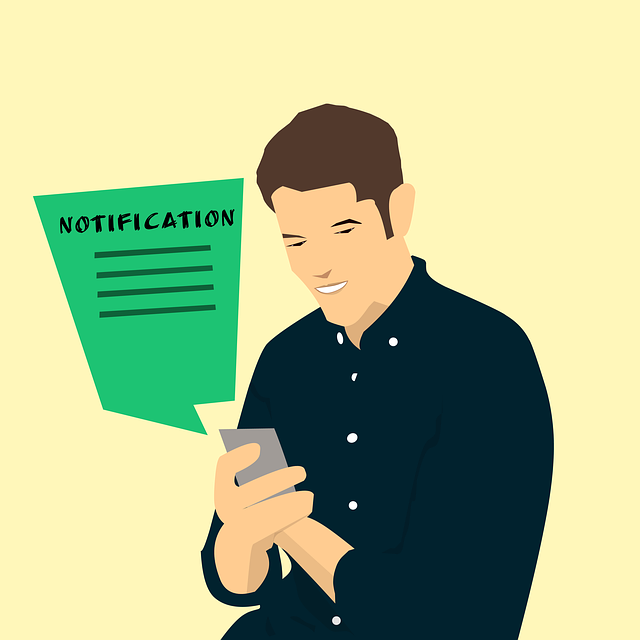You might be thinking, ‘Email personalization sounds like a lot of work. Is it really worth the effort?’
Well, let us assure you that it absolutely is. In fact, personalizing your emails is not only worth the effort, but it’s also essential for achieving higher email deliverability rates.
In today’s digital age, where inboxes are flooded with countless emails, standing out from the crowd is crucial. By personalizing your subject lines, segmenting your audience, and using dynamic content, you can grab your reader’s attention and increase the likelihood of your emails being opened and engaged with.
But it doesn’t stop there. Optimizing your email design for different devices, implementing A/B testing, and monitoring email deliverability metrics are all strategies that will further enhance your email deliverability rates.
In this article, we will explore these proven strategies for higher email deliverability. So buckle up and get ready to take your email marketing game to the next level.
Key Takeaways
- Personalized subject lines significantly impact open rates and engagement
- A/B testing different subject lines helps identify which ones resonate best with the audience
- Segmenting the audience based on preferences and behaviors improves email deliverability
- Dynamic content customization creates relevance and connection with the audience
Craft Personalized Subject Lines
Craft personalized subject lines to increase your email deliverability and capture the attention of your recipients. Personalization techniques in subject lines can significantly impact open rates and engagement. By tailoring your subject lines to match the interests and preferences of your recipients, you can create a sense of relevance and urgency.
Use their names, mention recent purchases, or include location-specific details to grab their attention. Subject line optimization is crucial for higher email deliverability. A/B testing different subject lines can help you identify which ones resonate best with your audience. Analyze data to determine what subject line characteristics drive higher open rates and click-through rates.
Once you have crafted compelling subject lines, you can move on to the next step of segmenting your audience based on their preferences and behaviors.
Segment Your Audience
Honing in on your target audience is like creating a finely tailored suit for your message to slip effortlessly into their inbox. By segmenting your audience, you can ensure that your emails are reaching the right people with the right content.
Targeted messaging is key to improving email deliverability, as it allows you to personalize your offers and provide relevant information to each segment. By understanding your audience’s preferences, behaviors, and demographics, you can create more effective email campaigns that resonate with them. Personalized offers have been shown to increase open and click-through rates, as recipients are more likely to engage with content that is specifically tailored to their needs and interests.
So, take the time to segment your audience and create personalized emails that will grab their attention. In the next section, we’ll explore how to use dynamic content to further enhance email personalization.
Use Dynamic Content
Immerse yourself in the world of your audience by using dynamic content, allowing you to tailor each email to their unique interests and preferences. Personalization techniques have become crucial in email marketing, and dynamic content management is a powerful tool to achieve this.
By using dynamic content, you can create personalized experiences for your subscribers, increasing engagement and ultimately improving email deliverability. With dynamic content, you can customize various elements of your emails, such as subject lines, images, and call-to-action buttons. This level of personalization creates a sense of relevance and connection with your audience, making them more likely to open, read, and interact with your emails.
Furthermore, dynamic content allows you to test different variations and optimize your email performance based on data-driven insights.
So, let’s dive into the next section about optimizing email design for different devices.
Optimize Email Design for Different Devices
Ensure your emails look amazing on any device by optimizing their design for different screens and engage your audience wherever they are.
Responsive templates are a crucial component in achieving this goal. By using responsive templates, you can create emails that automatically adjust their layout and formatting based on the device they are viewed on. This ensures that your emails are easy to read and navigate, providing a seamless user experience for your audience.
Additionally, consider the user experience when designing your emails. Use clear and concise content, visually appealing images, and a well-organized layout to capture your audience’s attention and keep them engaged.
Lastly, don’t forget to test your emails on different devices to ensure they display correctly. Implementing A/B testing can help you identify the most effective design elements and optimize your emails for higher engagement.
Transitioning into the subsequent section about ‘implement a/b testing,’ it is important to continuously test and refine your email designs to maximize their impact.
Implement A/B Testing
Try out A/B testing to supercharge your email designs and skyrocket your engagement rates! A/B testing is a powerful strategy that allows you to compare two different versions of an email to determine which one performs better.
By dividing your email list into two random groups and sending each group a different version, you can measure the effectiveness of various elements like subject lines, call-to-action buttons, or email layouts.
This data-driven approach helps you make informed decisions and optimize your email designs for higher deliverability and engagement. To get the most out of A/B testing, follow best practices such as testing only one element at a time, setting clear goals, and analyzing the results statistically.
By implementing A/B testing effectively, you can fine-tune your email campaigns and improve your chances of reaching the inbox.
Now, let’s explore how to monitor email deliverability metrics for even better results.
Monitor Email Deliverability Metrics
Keep an eye on your email delivery rates and engagement metrics to gauge the success of your email campaigns and make data-driven decisions for better results. To effectively monitor email deliverability metrics, consider the following best practices:
-
Track your email bounce rate: A high bounce rate could indicate issues with your email list quality or sender reputation. Regularly clean your list and ensure you’re sending emails to engaged recipients.
-
Monitor your email open rate: A low open rate may suggest that your subject lines or email content need improvement. Experiment with different approaches to increase engagement.
-
Analyze your click-through rate (CTR): A low CTR could indicate that your call-to-action or content isn’t compelling enough. Optimize your emails for better click-through rates.
-
Check your spam complaint rate: High spam complaints can harm your sender reputation. Make sure your emails are compliant with anti-spam laws and provide clear unsubscribe options.
By regularly monitoring these metrics, you can identify and address email deliverability challenges, leading to more successful email campaigns.
Frequently Asked Questions
How can I ensure my personalized subject lines are not flagged as spam?
To avoid spam filters and increase email engagement, make sure your personalized subject lines are genuine and relevant.
Don’t be too generic or overly promotional, as these can trigger spam filters. Instead, use an idiom like ‘kill two birds with one stone’ to convey a deeper meaning and captivate your audience.
Additionally, test your subject lines with spam filters and analyze engagement metrics to optimize deliverability.
Remember, a well-crafted subject line is key to standing out in crowded inboxes.
What are the best practices for segmenting my email audience?
To effectively segment your email audience, utilize various email segmentation techniques. Start by collecting relevant data such as demographics, purchase history, and engagement levels.
This will allow you to create targeted email campaigns based on specific customer segments. Personalization plays a crucial role in email marketing, as it leads to higher open rates and engagement.
By tailoring your messages to the unique needs and preferences of each segment, you can increase the effectiveness of your email campaigns and drive better results.
How can dynamic content be effectively used to personalize emails?
Using dynamic content for email personalization is a game-changer. It’s not like your recipients have better things to do than read generic, impersonal messages, right?
By tailoring your emails with dynamic content, you can capture their attention and boost engagement. Effective personalization strategies include using merge tags to insert recipients’ names, segmenting your audience based on their preferences, and leveraging behavioral data to deliver relevant content.
So, ditch the one-size-fits-all approach and start delighting your subscribers with personalized emails.
Are there any specific design considerations for optimizing emails on mobile devices?
When optimizing emails for mobile devices, mobile responsiveness is crucial. A user-friendly design ensures a seamless experience across devices. According to a study by Litmus, 54% of emails are opened on mobile devices.
To enhance user experience, keep the email layout simple and easy to navigate. Use a single column design, large fonts, and clear call-to-action buttons. Optimizing for mobile devices improves engagement and increases the likelihood of your emails being read and acted upon.
What are some commonly overlooked factors to consider when conducting A/B testing for email campaigns?
One factor that is commonly overlooked when conducting A/B testing for email campaigns is the ‘elephant in the room.’ It refers to a significant issue that is being ignored or overlooked.
In A/B testing, many marketers tend to focus solely on the content and design of the email, neglecting other crucial factors such as the timing of the send, the subject line, and the sender’s name. These factors can have a significant impact on the success of an email campaign and should not be underestimated.
Conclusion
In conclusion, implementing email personalization strategies can significantly improve email deliverability rates. By crafting personalized subject lines and segmenting your audience, you can increase open rates and engagement.
Using dynamic content and optimizing email design for different devices ensures a seamless user experience. A/B testing allows you to experiment and refine your email campaigns for better results.
Finally, monitoring email deliverability metrics is essential for measuring success and making necessary adjustments. Did you know that personalized emails have been found to deliver 6x higher transaction rates? So start personalizing your emails today for better engagement and conversions.








